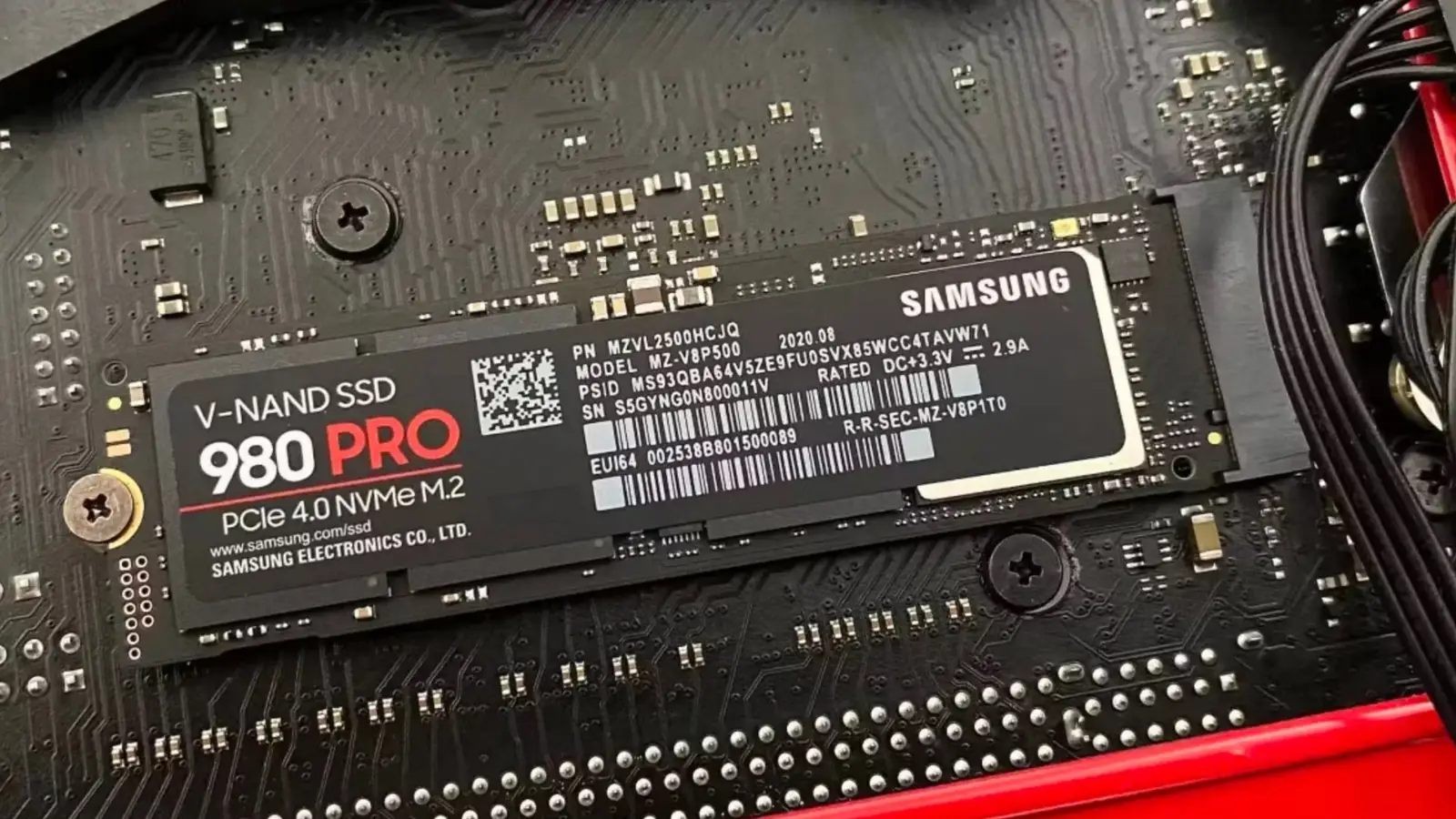
Unboxing a brand-new SSD is a special joy for any PC builder or gamer that promises lightning-fast boot times, nonexistent loading screens, and a snappier system overall. That persists, irrespective of whether you’re upgrading an old machine or adding faster storage to your gaming PC. Sadly, it’s easy to fall for fakes dressed as deals from Samsung, Crucial, or WD, in a market swimming with counterfeit drives. They’re usually hiding slow, unreliable, and downright fraudulent hardware under the heat spreader.
Spotting a fake once it’s in your hands is, thankfully, pretty straightforward, but reversing the transaction from a deliberately scammy seller can be a royal pain. That’s why the battle is won before you even make a purchase. I now perform these crucial checks before parting with my cash for any SSD, new or used. They take a few minutes of diligence, but save me hours of sleepless nights.
Vet the seller through the drive maker’s website
Verified vendors and importers are clearly listed
Brands like Samsung, Crucial, Kingston, and Western Digital invest heavily in their distribution channels and often maintain a current list of authorized dealers, distributors, and licensed importers for every region. Your mission, should you choose to accept it, is to locate this list and determine if the seller you’re buying from is featured on it. I’m not referring to the marketplace itself, such as Amazon or Newegg, but rather the actual third-party seller storefront listed on the product page.
This verification is no silver bullet, and an independent but perfectly legitimate computer shop might not have jumped through the hoops to get on an official partner list. They might be a smaller reseller sourcing their stock from a larger, authorized distributor. So, not finding your seller on the list isn’t an automatic disqualifier. However, if you’re buying from a prominent online retailer, their absence from the official list is a warning sign. For new drives, this is the best way to confirm you’re tapping into a legitimate supply chain. It ensures you’re buying genuine products, and you can easily claim a local warranty or arrange for repairs.
Verify credibility through the community
Reddit saves the day, again
If you’re buying from an independent store or a seller on a less-regulated marketplace like eBay, the official manufacturer’s list might not be much help. This is where you need to lean on the collective wisdom of the PC building community. Websites like TrustPilot are a decent starting point, but I find the real gold is in dedicated hardware forums. Subreddits like r/buildapc, r/hardware, and r/homelab are invaluable resources filled with enthusiasts who curate up-to-date lists of credible sellers on these unregulated marketplaces in the CONUS region.
You can also perform a search for the vendor name within these subreddits. Chances are, if a seller is notoriously bad, someone has already sounded the alarm. If the search turns up blank, you could try creating a post on the sub to ask members about the specific sellers offering the SSD. The feedback you get from seasoned builders can be the difference between a successful deal and disappointment. This works wonders for both new and used drives, as sellers of second-hand hardware are cautious of their reputation within these tight-knit communities.
Dreamy prices only exist in dreamland
Perhaps you should snooze overzealous deals
Everyone loves a good deal, but if a price seems too good to be true, it certainly is. Counterfeiters compete on price, not the quality of the stock. They seem well aware that shockingly low prices will attract bargain hunters who might be willing to overlook other red flags. Go ahead and compare the price of the SSD you want across several known, reputable retailers. If one seller is offering the same new 2TB NVMe drive for 50–70% less than everyone else, step back to ask yourself why that is.
Yes, there are refurbished drives and genuine discount sales, such as Black Friday, where you can get unbelievable deals on high-quality SSDs, just before the next generation hits the market. This is where I’d circle back to vet the seller, because a legitimate sale is often temporary. A scammer’s price is always suspiciously low because they look to fleece buyers instead of clearing old stock. This is a universal truth for both new and used drives. A used drive will be cheaper, yes, but its price should still be in a reasonable ballpark compared to other used listings for the same model. A price that drastically undercuts the entire market is merely bait.
Check the warranty and return policy
Prepare for the worst
A seller’s policies on warranty, returns, and after-sales support can be telling of their confidence in the SSDs on offer. Before you buy, dig into the fine print. For a new SSD, the seller’s warranty information should align closely with the manufacturer’s official policy. If a brand offers a 5-year warranty, but the seller just has a strict 30-day return policy, run. Legitimate sellers will facilitate the manufacturer’s warranty with clear policies.
For used drives, you obviously won’t get a full manufacturer’s warranty, but the seller should still offer a reasonable return window of up to 30 days, allowing you to thoroughly test the SSD. Shady sellers often have convoluted, customer-hostile policies designed to make returns impossible. Text like “all sales are final” or a week-long return window is grounds for suspicion. If this seems like too much work, consider using an AI tool to summarize and compare the seller’s policies with the drive manufacturer’s official warranty page.
Inspect photos before you buy
New or used, photos can be telling
Buying used items in person always has an advantage because you can inspect the SSD before making a purchase. Looking at the packaging for crisp and high-resolution printing, zero spelling mistakes, and remnants of a seal or manufacturer’s hologram sticker. I would also check for other security features, such as a scratch-off authenticity code that is verifiable on the manufacturer’s website. These verifications can be trickier when buying online, but they’re not impossible. Compare the product images on the seller’s page to the official images on the manufacturer’s website.
Photos should show all the memory modules, controller chip, and stickers in the same spots as the manufacturer’s imagery. Multiple drive revisions may introduce slight variations, though. Scammers often use generic PCBs and slap a sticker on them that mimics a major brand. When buying used, I’d ensure the photos show the sticker applied perfectly flat, without waves, bubbles, and delamination at the edges. Those are dead giveaways of a peeled and re-pasted sticker. Sure, sellers can use photos of a genuine drive and still sell you a dupe that bears visual semblance, but most scammers look for a quick buck, posting low-effort photos of the drive they plan to ship.
Read reviews from other buyers
Community verification, once more
Finally, read the reviews. Instead of taking the word of a seller’s star rating on Amazon or eBay, dive into posts from people who bought the same drive or similar tech products to see how the seller conducts business. Unscrupulous sellers can easily sway star ratings with a sea of overwhelmingly positive fake reviews. So, I’d scan the reviews for patterns of neglect, poor packaging, and recurring complaints about SSD authenticity. Sure, review systems tend to amplify negative experiences and sellers could manipulate them, but a handful of detailed, angry reviews from verified purchasers telling the same story of a faulty drive is a massive warning sign.
It’s much harder to fake a series of detailed, technical complaints than it is to generate thousands of positive comments. Pay attention to the dates of the reviews as well. A new product listing with hundreds of glowing reviews that appeared within a few days is highly suspicious. Ultimately, a consistent pattern of negative feedback is a reliable indicator that you should take your business elsewhere.
You may still get a dud
Despite these precautions, even the best of us can get scammed, sometimes simply because Amazon sent out a returned or RMA package without verifying the contents for authenticity. If your new drive’s transfer speeds fluctuate or seem off, benchmark read/write speeds against theadvertised specs using tools like CrystalDiskMark. More importantly, run a full capacity test with ValiDrive. Such programs write data to the entire drive and then read it back to verify the real capacity. Duds may report 2TB capacity to the OS, but their 64GB of actual storage fails spectacularly when tested.
If you get a verifiable fake, document everything with screenshots and start a dispute with the payment provider you used. Additionally, please consider sharing your experience with the community and posting about it on forums like Reddit, detailing the seller, the product, and your test results to warn other potential buyers. Finally, never let these cheating sellers have the fake drive back, just so they can rip off the next unsuspecting or less diligent buyer.



